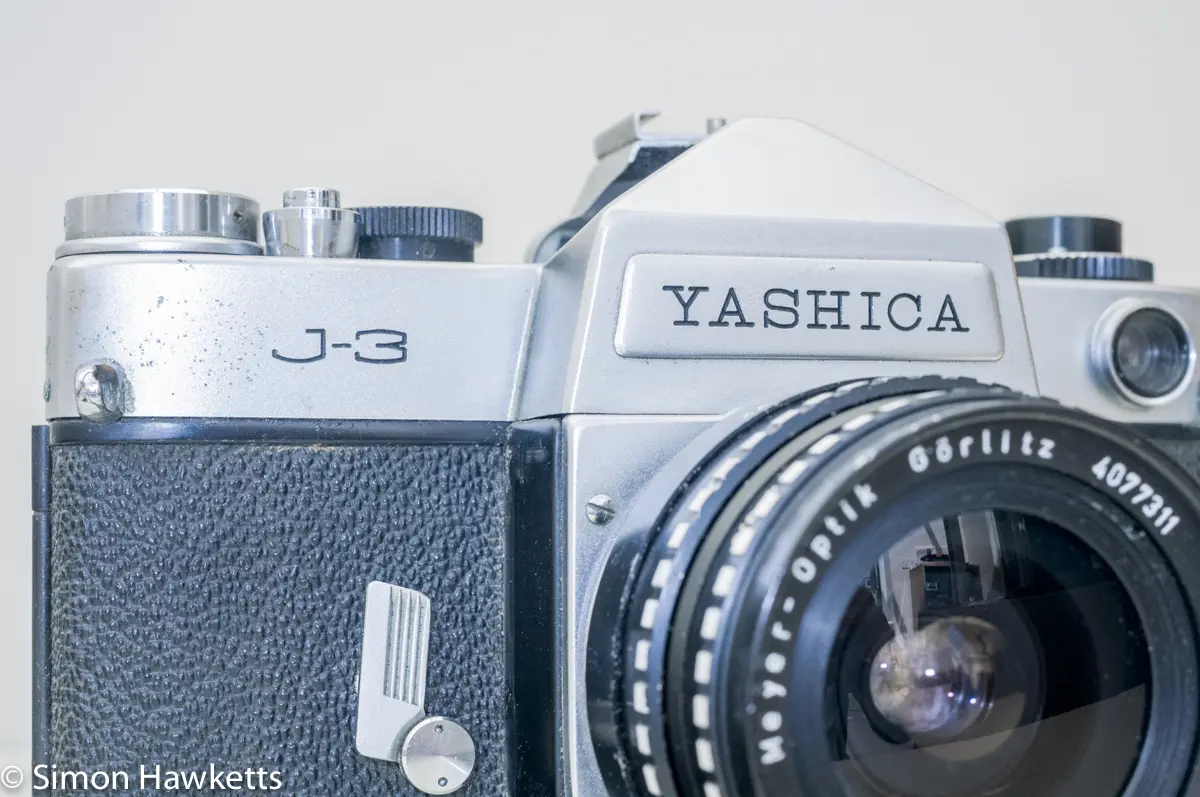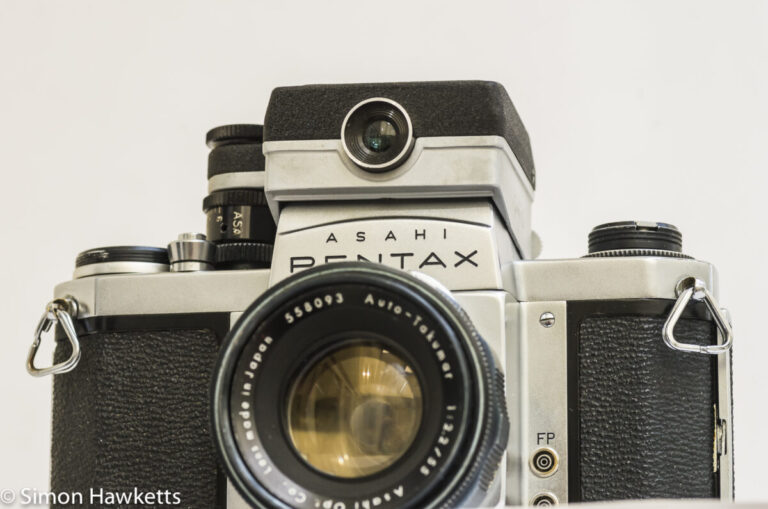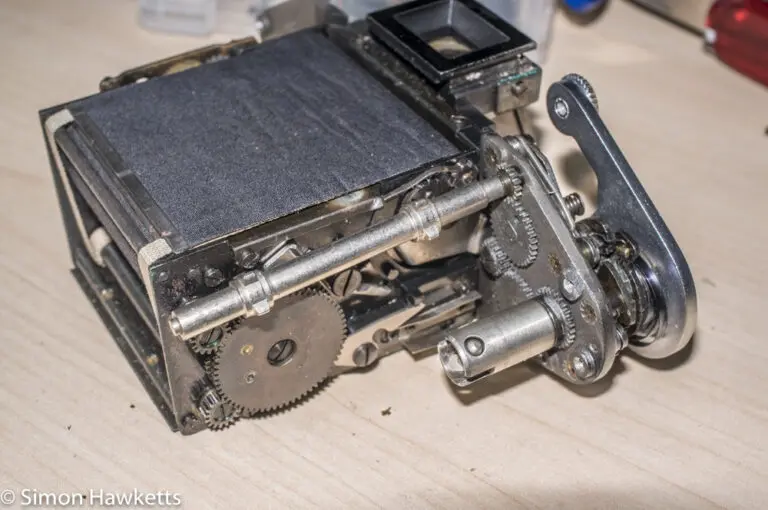Yashica J-3 35 mm SLR camera
The Yashica J-3 is a 35 mm Single Lens Reflex camera which was made in the early 1960s and features a useful range of shutter speeds, a built-in light meter, a self-timer and a universal M42 lens mount.
Yashica J-3 Images
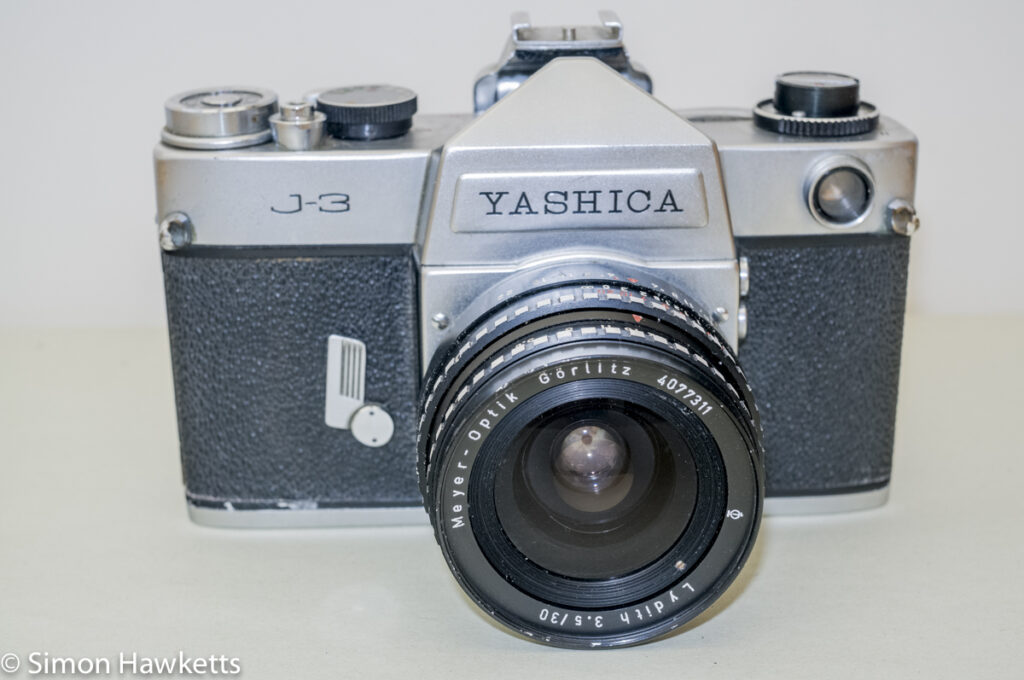
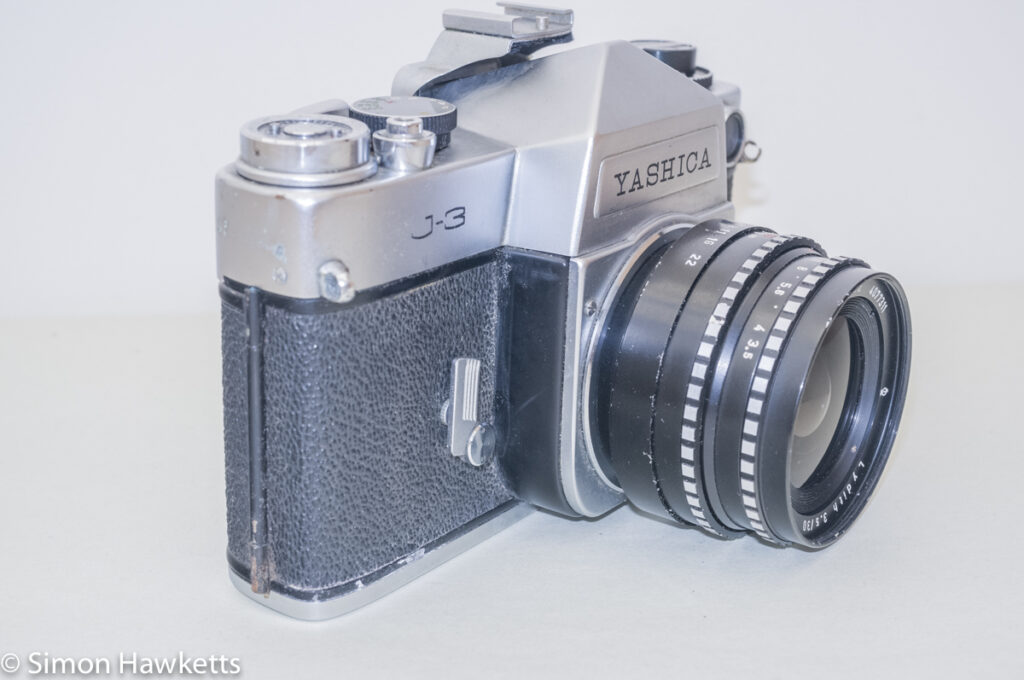
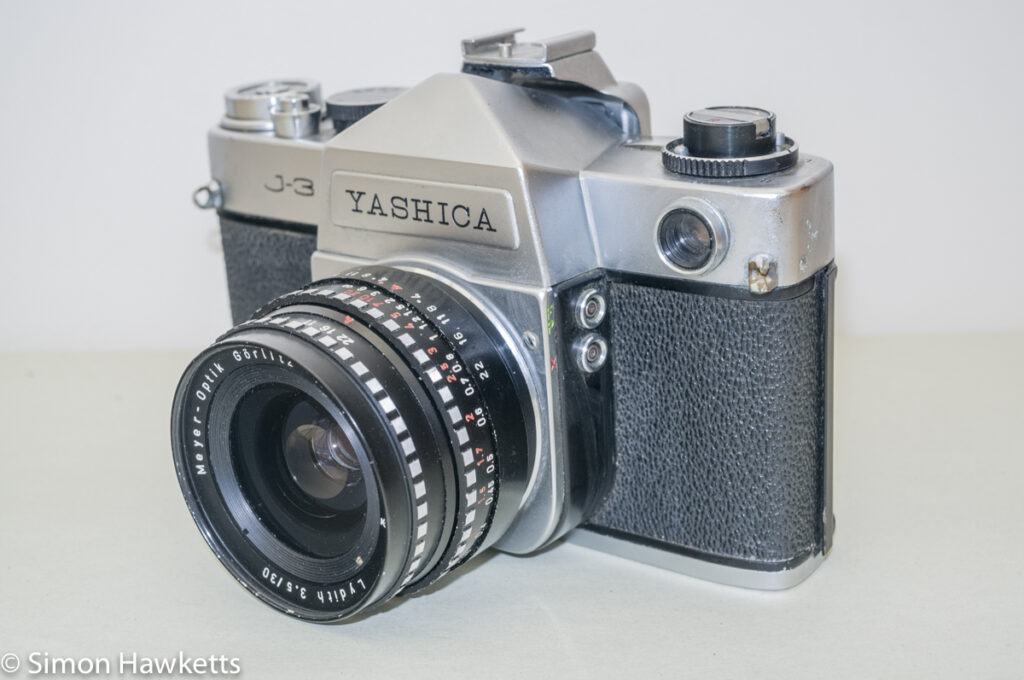
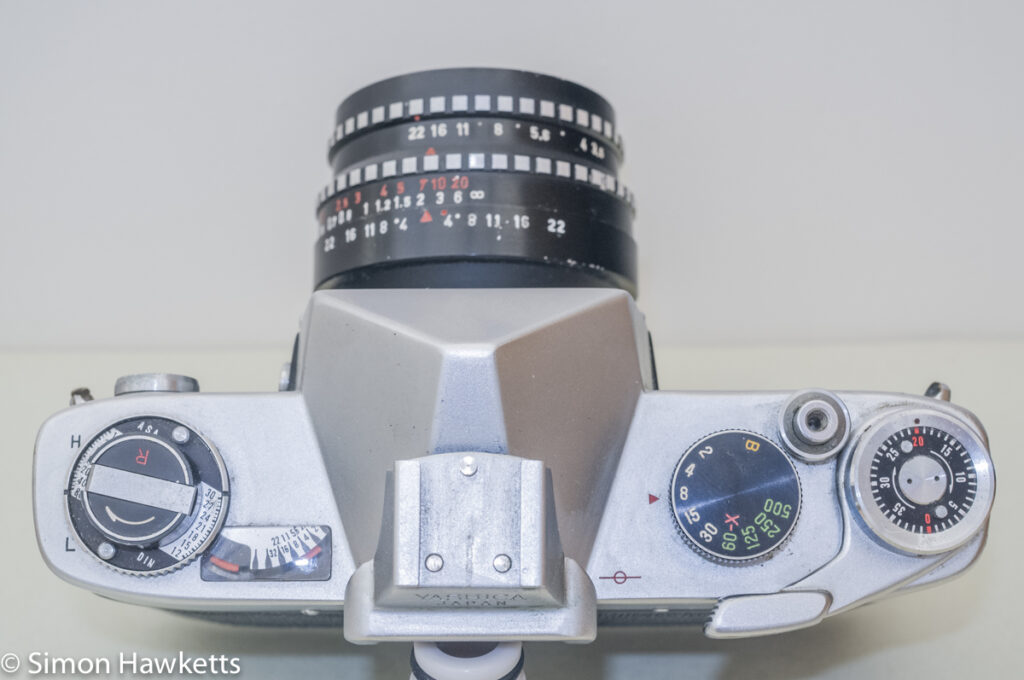
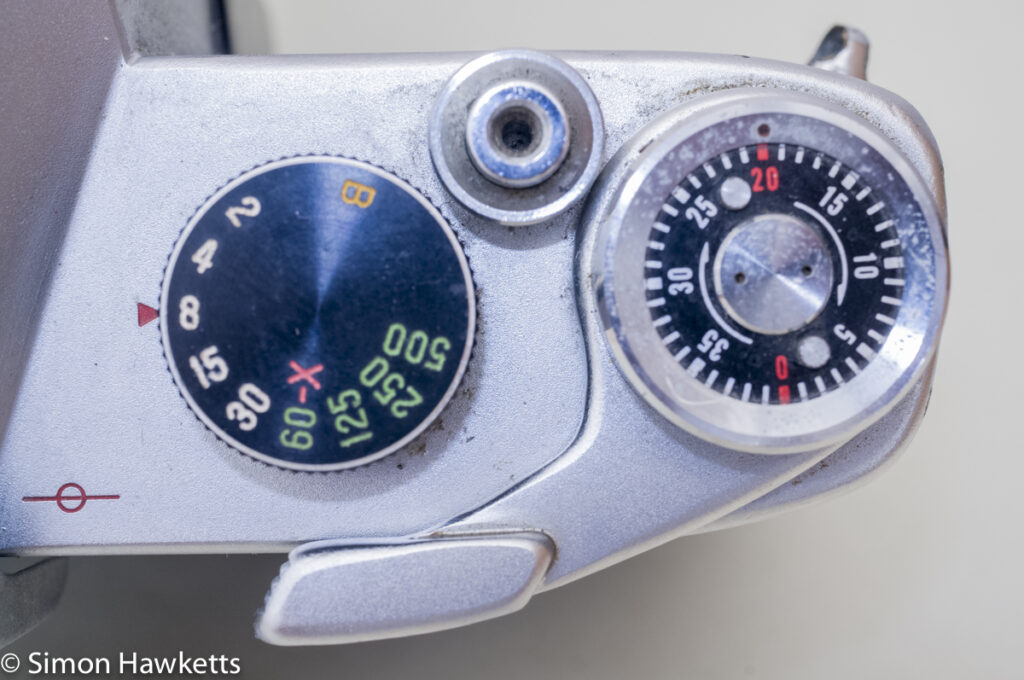
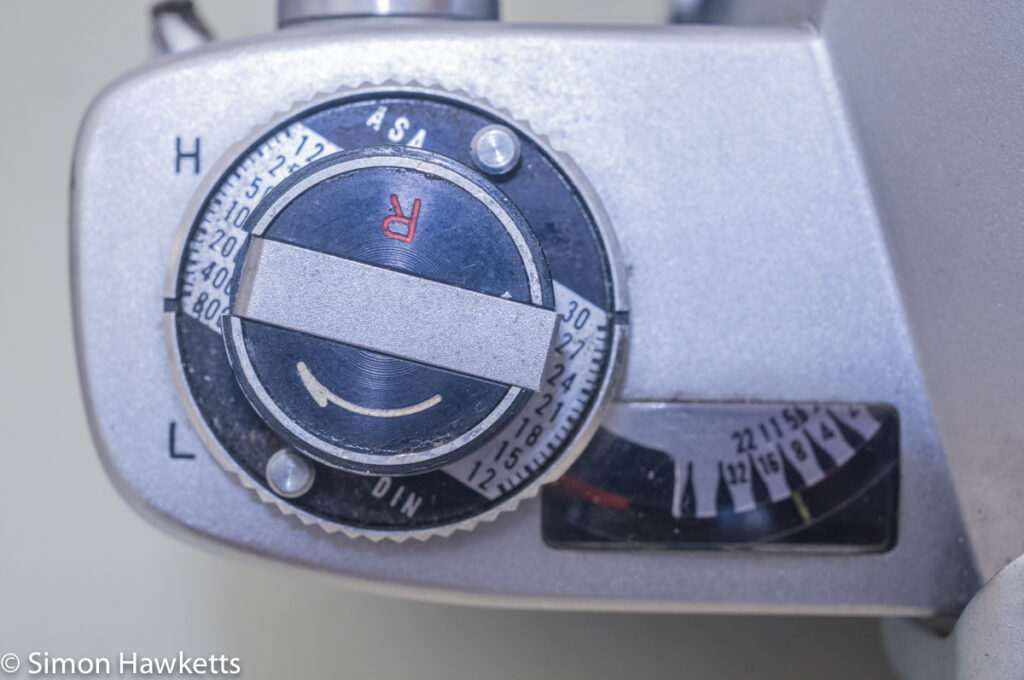
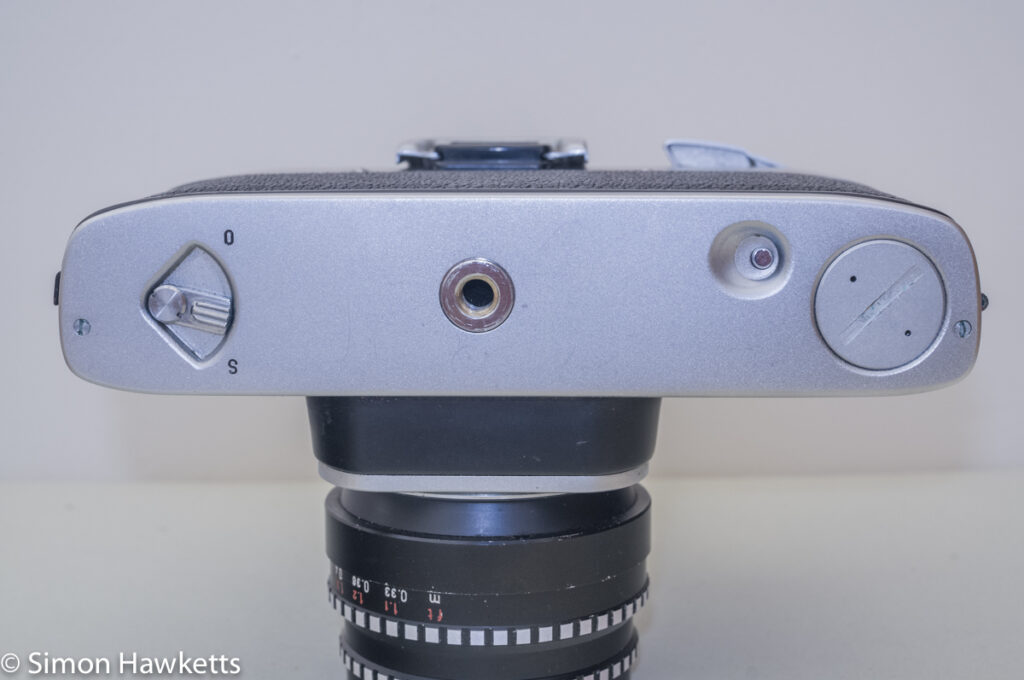
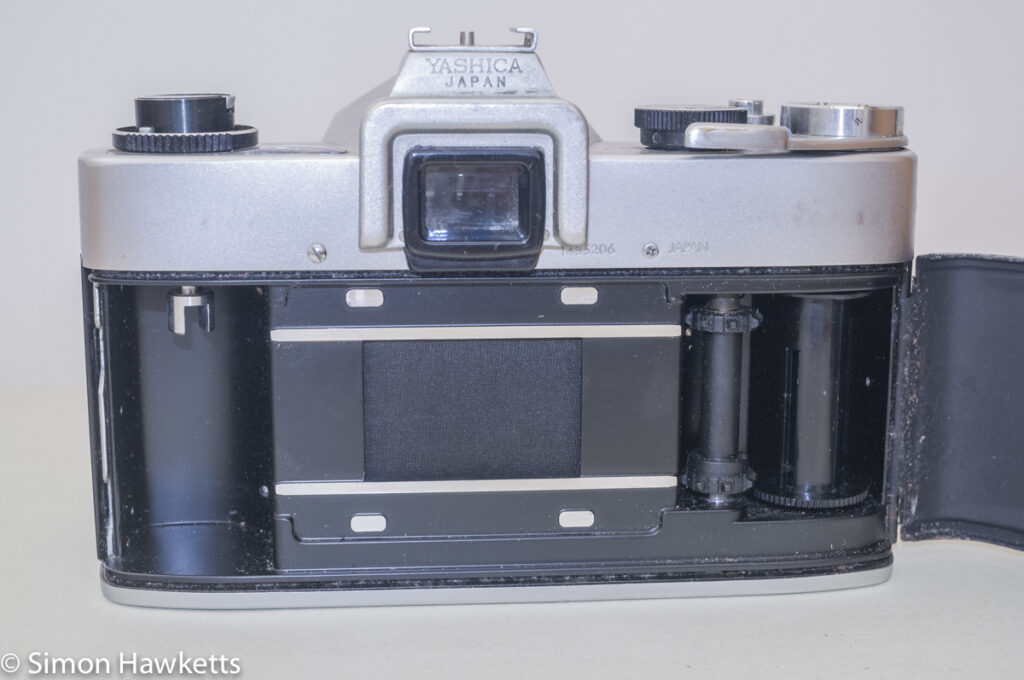
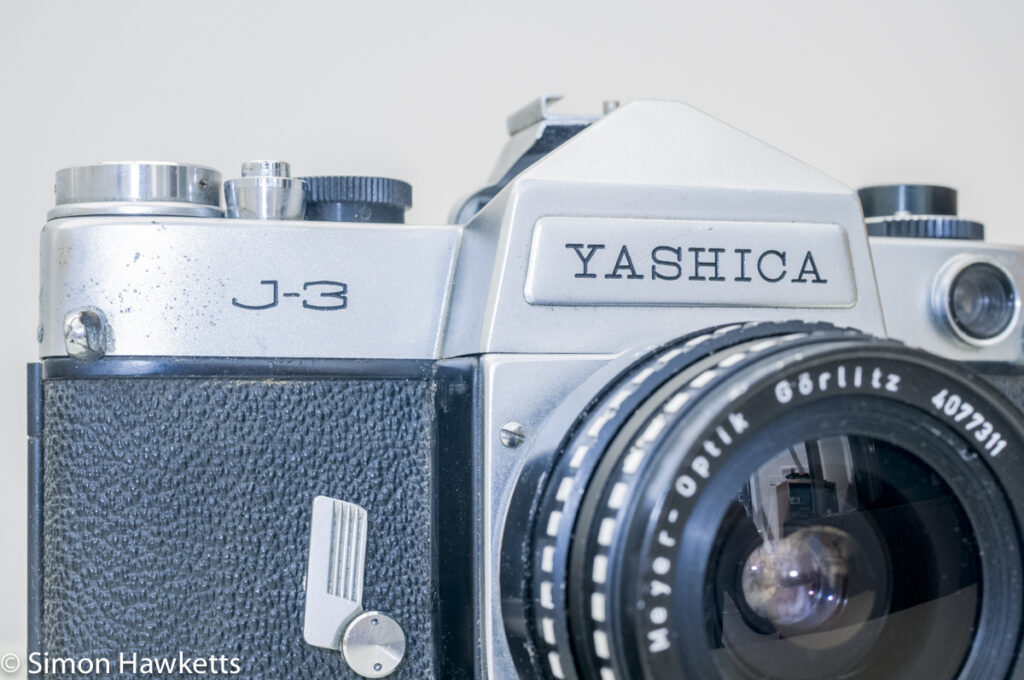
My Yashica J-3 camera
I bought my copy of the Yashica J-3 for £10 from eBay.
It came with a Soligor 180 mm telephoto lens and a 2X converter fitted, but for the purposes of the pictures above, I’ve fitted a Mayer-Optik Lydith 30 mm f/3.5 lens to the body. Originally the camera would have been supplied with a Yashica 50 mm f/2 pre-set lens, but although I have one of those in my collection, at the moment it is packed away, and I can’t easily get to it.
The seller described the camera as working (well, he said it ‘clicked’) and as far as I can tell I think that is right. The shutter speeds all sound about right and the operation is smooth and precise.
The general condition of the unit is not too bad. There is a bit of surface corrosion on some parts of the bright work and plenty of ingrained dirt and one of the strap lugs is broken, but that’s about it. I don’t know if the light meter works because I don’t have a battery which fits, and it isn’t possible now to buy mercury cells – I will try a modern battery when I get some back ‘in-stock’.
Although this is not related to the Yashica J-3 itself, I found the lens supplied with the camera quite interesting; It is an M42 lens with a 2x converter but the converter and the lens seem to have been made as a ‘matched pair’. There is an adaptor ring fitted to the bottom of the lens which needs to be unscrewed from the lens and the 2x converter inserted between the adaptor and the bottom of the lens. I don’t know it this is because they were supplied together or if the M42 ring at the bottom of the lens was a Soligor ‘adaptall’ type system.
Yashica J-3 Description
The Yashica J-3 followed on from the earlier Yashica Pentamatic, adding a light meter and self-timer to the camera specification, but removing both the top shutter speed of 1/1000 sec and the slowest 1sec setting.
The first thing I noticed about the J-3 when I received it is how well engineered it is. Admittedly, my unit is a bit grubby and has a bit of surface corrosion, but the film advance and the shutter feel like quality engineering. In fact, the camera it most reminded me of in terms of ‘feel’ is the Pentax Spotmatic which I consider high praise!.
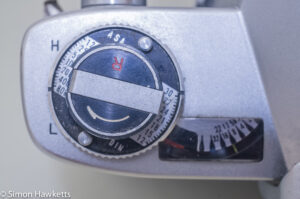
The light meter measures the reflected light from the subject with a sensor mounted in the top plate of the camera pointing generally in the direction the lens points.
It is a semi-coupled light meter in that the pointer shows the correct aperture to use for the shutter speed the camera is set to. Once a reading has been taken it’s the photographer’s job to transfer the reading to the lens, but as the shutter speed dial is adjusted, the scale on the light meter moves to compensate so that part is coupled.
The light meter has two ranges marked H & L which allow the meter sensitivity to be adjusted for low light conditions. If the meter needle is in either of two ‘red zones’ at the ends of the scale, the meter can be switched into the other sensitivity with a switch fitted around the rewind knob. There is also a central ‘off’ position to this switch, and the film speed is set using a small adjuster dial fitted to the top.
I found the viewfinder on the Yashica J-3 a bit of a disappointment. It’s just a ground glass screen with an inner micro-prism centre and although that was pretty standard fare for cameras of this vintage, I find it quite difficult to focus with. I honestly don’t know if that is a comment on the camera or the state of my eyes, however.
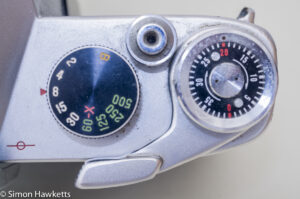
The shutter is a cloth, horizontal, focal plane shutter of a type most 35 mm SLRs of the period would have been fitted with. The offered speeds are fine for the majority of photographers; I doubt many would miss the 1sec setting, although the absence of the 1/1000 setting, which was commonly the top speed of most cameras of the time, would have been more keenly felt. The top plate shutter release is threaded for a remote cable release.
On top of the film advance lever is a frame counter which is manually set by the photographer as the film is loaded, and it then counts the frames as they are taken. Interestingly, the 20th frame is marked in red, so I assume in the early 1960s 35 mm film was sold in 20 exposure lengths as well as 36 exposure.
There is no flash accessory socket fitted to the camera itself, but my version has an adapter which slips over the viewfinder allowing the flash to be mounted and plugged into one of the two flash sync sockets on the side of the lens mount.
As I said in the into, the camera has a standard M42 screw thread lens mount which allows it to take any of the huge variety of lenses available which would have been a big selling point to photographers in the 1960s since the vast majority of SLR lenses would have been M42.
Yashica J-3 Specification
- Yashica J-3 35mm slr camera
- Shutter speeds of 1/2sec to 1/500sec + bulb
- Accessory Hot Shoe fitted over eyepiece
- Top mounted shutter release with thread for cable release
- Manually resettable frame counter on film advance
- Light meter built into the top panel of the camera
- Light cell fitted to top front of camera
- Light meter powered by a single Mercury cell
- Film speeds 12 to 800 ASA
- Ground glass focusing screen with central micro-prism
- Well Engineered
- Tripod bush in-line with the lens mount
- FP and X flash sync sockets
- Self Timer fitted on front of camera
- Universal M42 threaded lens mount
- Serial No: 1435206
- Manual available on-line here
Discover more from Everything Vintage
Subscribe to get the latest posts sent to your email.

